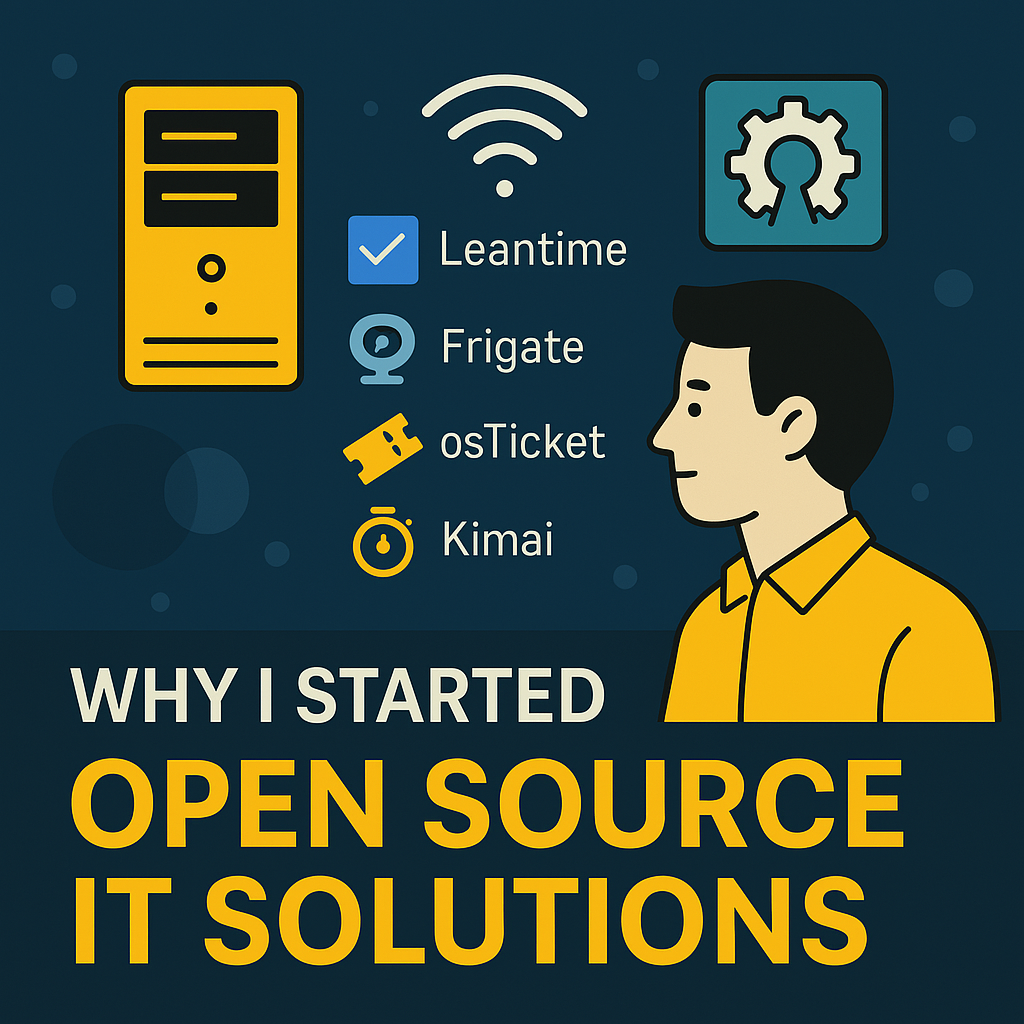Turning real-world experience into accessible, affordable IT solutions for others.
When I first started working with a start-up in Leicester—initially as a direct employee—I didn’t walk into a high-tech environment or a ready-made infrastructure. I walked into an empty room… with a tight budget and a vision.
That challenge laid the foundation for Open Source IT Solutions.
💻 Building Infrastructure on a Shoestring
With a tight budget, I sourced a refurbished Dell R220, upgraded it to 16GB RAM, and got to work. That single, reliable box became the heart of a self-hosted tech stack that powered a growing business.
I wasn't just solving technical problems—I was solving business problems without breaking the bank. That mindset still drives everything I do today.
🌐 Getting Online (Literally)
One of the first things I arranged was the installation of a broadband line—sounds simple, but it was foundational. No cloud. No services. No roadmap. Just a line into a small office and the freedom to build from scratch.
🛠️ Open Source in Action
Rather than throwing money at SaaS tools, I turned to the open-source community. Here's what I implemented:
📋 Leantime
Used for project management—especially valuable in a production environment where predicting delivery dates and manufacturing times was essential.
👨💼 OrangeHRM
Provided a system for managing employee information. Later on, I worked to enable and test its time logging features for internal accountability.
🎥 Frigate
Used as a cost-effective security solution, Frigate was paired with a TP-Link C100 smart camera to keep an eye on the car park. It offered motion detection and real-time alerts without the need for expensive CCTV infrastructure.
🔐 WireGuard
Set up for remote access, giving key team members a secure way into the internal network when working off-site.
📚 BookStack
Created for internal process documentation—because good infrastructure isn’t just hardware and software, it’s the knowledge you build and share with your team.
🎫 Ticketing System – osTicket
Before I moved on to explore new opportunities, I deployed osTicket to continue offering external support. This gave employees a clear and familiar way to raise IT issues or requests—even after I was no longer working onsite.
⏱️ Kimai2
To keep things transparent and professional, I hosted my own instance of Kimai 2—a lightweight, open-source time tracking system. It allowed me to log hours spent on support and bill accordingly, without any guesswork or confusion.
📦 InvenTree for Stock and Supply Management
Another key solution I rolled out was InvenTree—an open-source inventory management platform. It allowed the company to:
- Keep better track of stock levels
- Manage component usage and ordering
- Predict supply shortages before they became a problem
It replaced messy spreadsheets and manual tracking with something scalable and self-hosted—again, at no extra cost beyond hardware and time.
🌱 From One Business to Many
That project sparked something bigger. I realised there are countless small businesses, non-profits, and start-ups out there that need reliable infrastructure—without enterprise pricing or unnecessary complexity.
That’s why I started Open Source IT Solutions.
It’s not just about saving money (though that’s a big part of it). It’s about:
- 🔓 Empowering people with tools they control
- 🧩 Creating tailored, maintainable solutions
- 🛡️ Promoting privacy, transparency, and resilience
- 💬 Offering support that’s practical and down-to-earth
🧠 Personal Reflection: Finding My Place
Looking back, I sometimes think about whether I struck the right balance between supporting the business technically and contributing in other areas. With my background in IT, I naturally focused on systems that could make things easier—tools to help with planning, communication, and day-to-day processes.
While I wasn’t directly involved in physical production, I hoped that by setting up the right tools, I could give the team more time and space to focus on what they did best.
It was a learning experience, and it shaped how I approach IT solutions today—practical, accessible, and aimed at making real-life work smoother.
💬 What’s Next?
Whether you’re a solo founder trying to get your first project online, or a small team looking to streamline internal processes—you don’t need to reinvent the wheel. The solutions are out there. I’ve used them. I’ve lived them. And I want to help others do the same.
If you're looking for affordable, open-source-first IT consulting, you're in the right place.
📧 Get in touch
📚 Or check out the blog for more real-world guides and stories.

